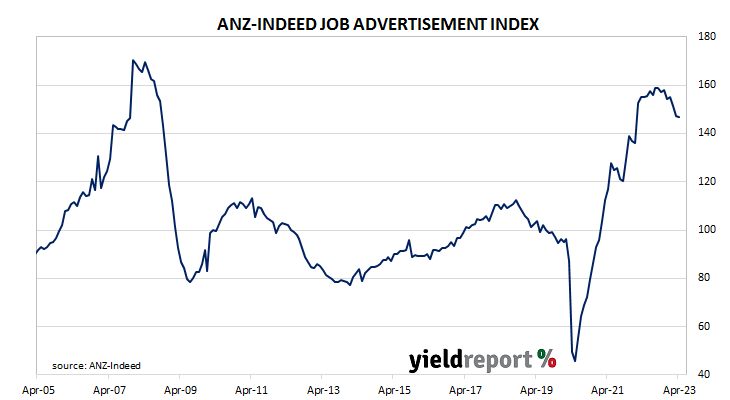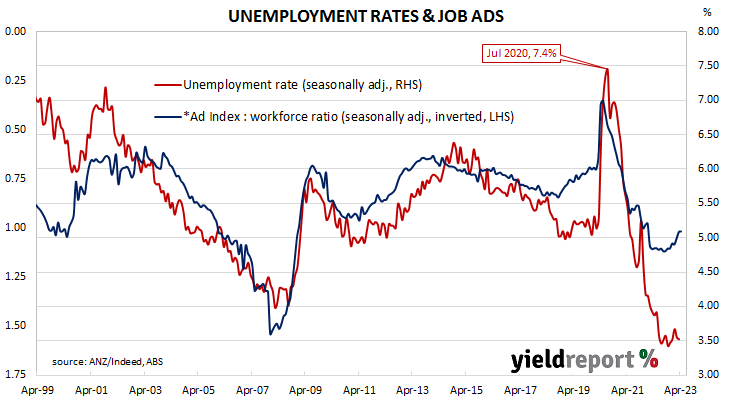Summary: Job ads down 0.3% in April; 5.4% lower than April 2022; “consistent with solid employment gains”; ACGB yields up modestly; rate-cut expectations soften; ad index-to-workforce ratio steady at 1.02.
From mid-2017 onwards, year-on-year growth rates in the total number of Australian job advertisements consistently exceeded 10%. That was until mid-2018 when the annual growth rate fell back markedly. 2019 was notable for its reduced employment advertising and this trend continued into the first quarter of 2020. Advertising plunged in April and May of 2020 as pandemic restrictions took effect but then recovered quite quickly.
According to the latest ANZ-Indeed figures, total advertisements decreased by 0.3% in April on a seasonally adjusted basis. The decline followed a 2.7% loss in March and a 2.6% loss in February. On a 12-month basis, total job advertisements were 5.4% lower than in April 2022, down from March’s revised figure of -5.2%.
ANZ senior economist Catherine Birch said “…the level remains very high, signalling significant unfilled labour demand, and is consistent with solid employment gains.”
The figures came out on the same day as the Melbourne Institute’s latest reading of its Inflation Gauge and Commonwealth Government bond yields increased modestly on the day, ignoring movements in US Treasury yields on Friday night. By the close of business, the 3-year ACGB yield had inched up 1bp to 2.99%, the 10-year yield had added 2bps to 3.36% while the 20-year yield finished 3bp higher at 3.81%.
In the cash futures market, expectations regarding future rate cuts softened. At the end of the day, contracts implied the cash rate would rise from the current rate of 3.57% to average 3.59% in May and then increase to an average of 3.625% through June. August 2023 contracts implied a 3.695% average cash rate while May 2024 contracts implied 3.385%, about 18bps below the current cash rate.
The inverse relationship between job advertisements and the unemployment rate has been quite strong (see below chart), although ANZ themselves called the relationship between the two series into question in early 2019. A lower job advertisement index as a proportion of the labour force is suggestive of higher unemployment rates in the near future while a rising ratio suggests lower unemployment rates will follow. April’s ad index-to-workforce ratio remained unchanged at 1.02 after revisions.
In 2008/2009, advertisements plummeted and Australia’s unemployment rate jumped from 4% to nearly 6% over a period of 15 months. When a more dramatic fall in advertisements took place in April 2020, the unemployment rate responded much more quickly.



